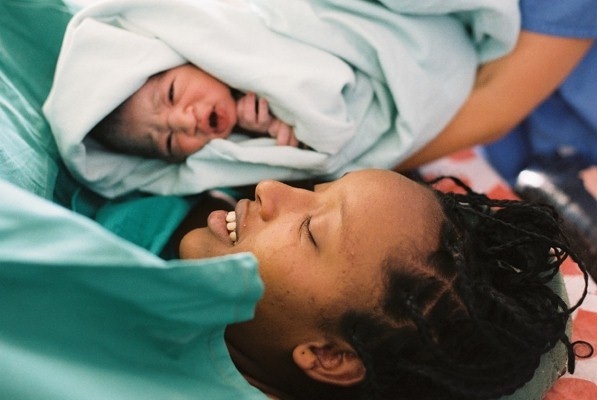11th April
Now back in Addis again after our two weeks of travelling and on the eve of my departure from Ethiopia back to the UK. I have to admit to being ready to go home now as although travel is always a wonderful experience-you always want to be home in the end. This will also be my penultimate blog, this one to document briefly our holiday with a final blog on the reflections of my whole time in Ethiopia (should keep me occupied for some of the 9-hour flight tomorrow).
We have had two amazing weeks of travel that were complete contrasts to one another: In the first week we travelled south into a place called the Omo valley. Illona (Steppes Travel - an advert as they have a link to my blog on their website) recommended that we include this trip in the itinerary but did caution that it was for people with a spirit of adventure and that we would need to be flexible as things might change and to "go with the flow" - I had assumed that this comment was meant metaphorically but it turned out to also have a more literal meaning! The best time to visit the Omo doesn't technically include late March and certainly from mid-April visits are not recommended as the roads become impassable as the rainy season, which begins in May throughout most of Ethiopia arrives earlier in the Omo valley.
South Omo is a bit like the land that time forgot- it is stunningly beautiful with rolling hillsides, sparse population and dense green forests, although the temperatures reach very high levels in the summer, courtesy of the plant life being drought resistant and periodic very heavy rainfall the area remains verdant year round (not really what you are expecting in a country notorious for drought and famine) - the landscapes are such that a dinosaur or two would not look out of place wandering the vast landscapes and this would be in keeping with the tribal people of the area who live a pastoral life (a large herd of cows marks out a man of wealth) and for whom the comforts of even the 11th century (dragging back school memories of descriptions of life around the time of the battle of Hastings!) have yet to reach (although beer and coca cola are the notable exceptions to this). Visiting the different and often isolated tribes is the reason that tourists visit the South Omo valley.
The travelling was difficult in the extreme with severely rutted, muddy (doesn't really begin to describe it) roads with the additional problem of numerous streams/small rivers to cross. At one stage we had to leave the car on the banks of a newly formed "wadi" river for two nights and wade across with backpacks (new experience for us) and walk to our hotel. Thankfully the car was good and the driver skilled (although we did requiring towing out of a ditch by a second 4x4 on one occasion).
The tribes we visited are straight out of National Geographic and although you know that there are people who continue to live in this way it is still hard to believe when witnessed first hand. As an example of ways of life we can't even begin to comprehend we witnessed what is called a "bull-leaping ceremony". This is the occasion where a teenage boy (14-15 years) from the Hamer tribe in order to prove his bravery (and thus eligibility to chose a bride - read this how you will!) must jump (in reality run along the backs) stark naked of a row of large (particularly the horns) cattle - one slip of the foot would have disastrous consequences. If this isn't bizarre enough prior to this act (which takes only a few minutes) all the women in his family put themselves forwards to be whipped with birch branches (drawing blood) as a sign of their devotion to him and other men in the family. It was fascinating although I have to confess some qualms about being an observer on such occasions and I still can't quite get my head around it all. As the Tribal people are pastoralists and subsistence farmers they are incredibly poor even by Ethiopian standards (we sheltered from the rain in the hut of a family who appeared to have no other material possession apart from a single cooking pot). This creates an unexpected commercialism where the old maxim of responsible tourism ("take only photos - leave only footprints") doesn't apply as these incredibly photogenic people have realised that their image has a value. As a result every photograph taken must be negotiated and paid for. This creates difficulties as although the fees they ask are in reality small (1-5birr=5-25p) it feels wrong to be singling out an individual from a group as more worthy of a photograph that the others but as the birr do eventually run out this is what you must do.
The second week of our holiday was in the North of Ethiopia. We flew a number of legs of the journey and thus avoided the long road journeys that were unavoidable in the first week. We still had a number of excursions by four wheel drive minibus (much less comfortable that a 4x4) over terrible roads and this has left us concluding that one thing we will not miss on return home is Ethiopian roads (from previous blogs you will know I had probably reached this conclusion already). The landscapes of the north are completely different to the south with vistas much more in keeping with expectations of what Ethiopia should look like. Rugged, rocky, biblical type landscapes that are very dry and although not desert support little in the way of vegetation. This is the Ethiopia that can be severely affected by drought as if the rains fall to come then the livestock die as they are unable to find any food and the limited crops fail resulting in widespread famine.
So the amazing thing is that in this bleak and remote landscape early Christians built monolithic rock churches (like those in Petra in Jordan) and 16-18th century Ethiopian Emperors held their courts. All this creates more heritage than the rest of sub-Saharan Africa put together. Even more amazing (and rather sadly) is the fact that relatively little seems to be known about it all including why it all developed here (churches particularly) - this maybe due to the difficulties in access for foreign archaeologists or simply that there are more pressing humanitarian projects demanding funding in Ethiopia.
There is no doubt that travel like many things in Ethiopia is difficult but at the same time very rewarding for the effort- the hospitality culture exists even amongst people who own virtually nothing and they remember something I sometimes think that we may have forgotten in the west- offering a smile of welcome to a stranger is free!


No comments:
Post a Comment